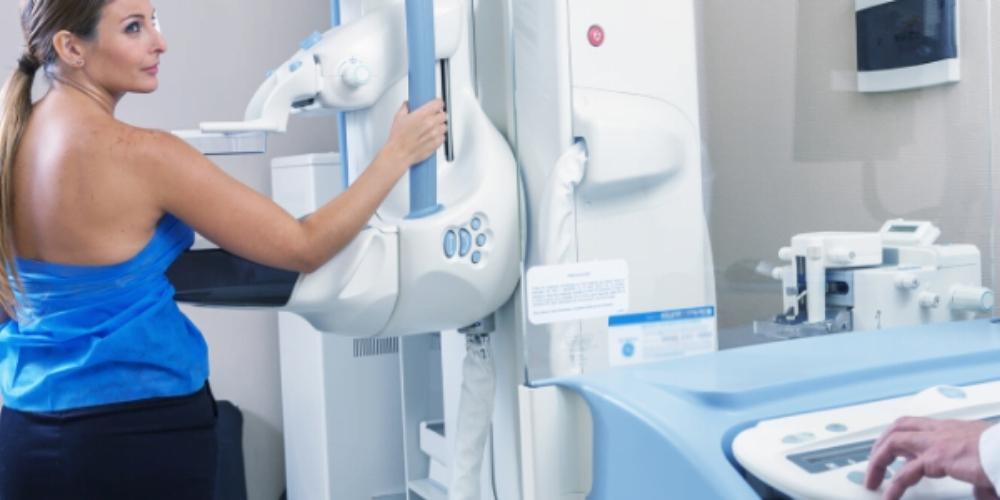Breast cancer continues to affect the lives of millions of women in the United States each year. To combat the mortality rate, medical practitioners have worked to increase detection efforts over the years.
In a recent study published on May 11th in Cancer, researchers found that mammography screening reduces the risk of death in breast cancer cases by 41% within 10 years of diagnosis. The study noted how advances in breast cancer therapy were not the reason for the reduction in mortality rate, but rather that diagnostic imaging and screening were the catalyst for the change.
Medical imaging has been used extensively in women's health, especially as it relates to breast cancer. For example, physicians have been using ultrasound as an early diagnostic tool to evaluate lumps in the breast and for image-guided breast biopsies. Moreover, researchers recently found that handheld ultrasound imaging was able to detect 9 different features linked to breast cancer.
The research team was led by Stephen Duffy, PhD and László Tabár, MD. The doctors examined a pool of subjects that covered approximately 30% of the screening-eligible population in Sweden, or more than half a million women. They compared women who underwent mammography screening with those who did not.
The researchers discovered a reduction in mortality along with a 25% reduction in the occurrence of advanced breast cancer. Thus, further highlighting the viability of diagnostic imaging as a method to detect and diagnose the disease.

"The results speak for themselves," said Dr. Tabár, a professor of radiology at Uppsala University in Sweden. "The 41% mortality decrease is above and beyond any effect modern therapeutic regimens might have had because the therapeutic regimens were following the same, uniform guidelines in both groups. The only difference between the two groups was participation or no participation in screening."
The broad time range in which mortality data is collected has commonly posed a hurdle for researchers conducting observational studies. This is because the data applies to breast cancers which were diagnosed and treated during previous years, which can translate to a large span of time. Within this span, researchers note that the conditions surrounding screening and neoadjuvant therapy could be substantially different from prevailing care in the year of death.
In this study, the research team worked to overcome this challenge. Doctors Duffy and Tabár designated a new endpoint: the incidence of breast cancer leading to mortality within 10 to 20 years post-diagnosis (from the years 1992 to 2016). The study’s endpoint signifies that death due to breast cancer, mammography screening, and treatment all belong to the same time period. Moreover, in every diagnosis year, patients who underwent diagnostic imaging for breast cancer and those who did not, received treatment in accordance with the protocols appropriate for their stage of disease.
"Thus, changes in therapy cannot account for the current study results," the authors noted.
The research team’s work builds on a previous study conducted in one county in Sweden that revealed a 60% lower incidence of fatal breast cancer within 10 years for women participating in screening compared with women who did not (Cancer, February 15, 2019, Vol. 125:4, pp. 515-523). The goal of Dr. Duffy and his colleagues’ most recent study was to determine whether they would find similar results in a larger population.

Women in Sweden between the ages of 40 and 54 undergo screening using two-view mammography every 18 months. Additionally, women between the ages of 55 and 69 undergo screening every 24 months. The research team calculated the incidence rates of 2,473 breast cancer cases that were fatal within 10 years of diagnosis and the incidence rates of 9,737 advanced cases. Furthermore, the authors collected data from the national registries on breast cancer diagnosis, cause of death, and date of death. Information on tumor characteristics were collected from regional cancer centers.
The results of the study indicated a 41% reduction in fatal cases within 10 years of diagnosis among screening participants and a 25% reduction in advanced breast cancer. The authors defined advanced breast cancer as an invasive breast cancer measuring more than 20 mm and/or four or more metastatic axillary lymph nodes.
In conclusion, the researchers were not that surprised by the results as they were similar to those of the smaller study performed in Sweden.
"However, the current study, observing more than half a million women over many years, leaves us in no doubt that screening has been effective in reducing the risk of death from breast cancer," the authors concluded.
EDM carries a wide range of supplies and equipment for women's health. Our offering includes high-quality products for biopsies, IVF, gynecology, and ultrasound, such as gels, covers, and disinfectant products.






